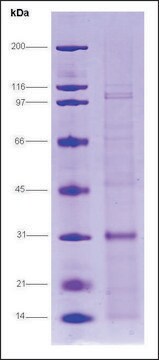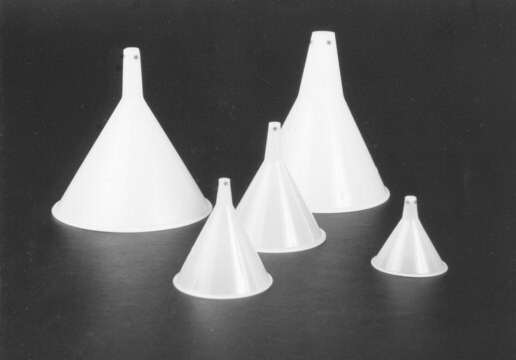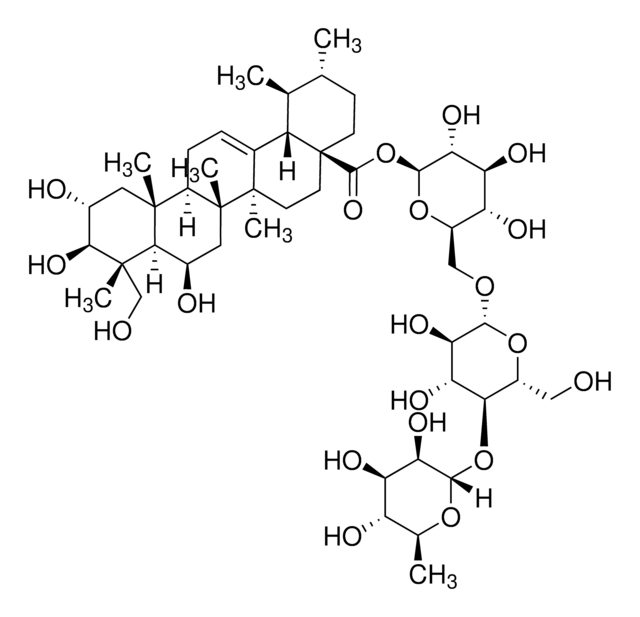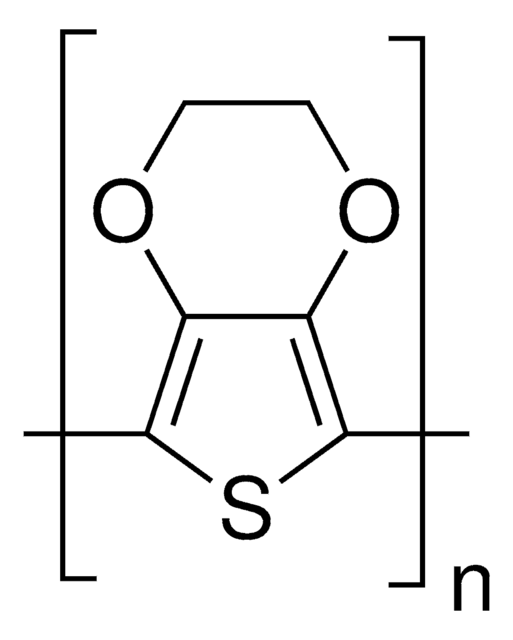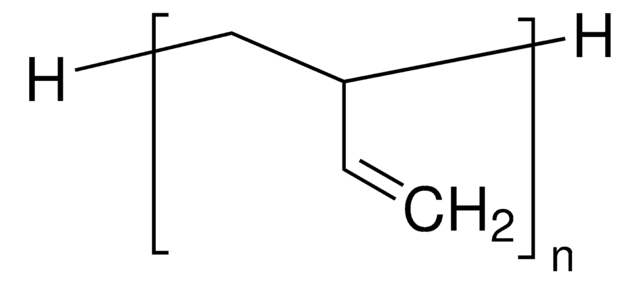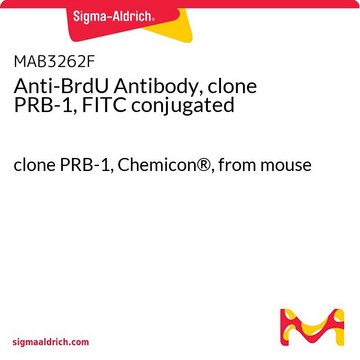346101-M
Androgen Receptor, His•Tag®, Human, Recombinant, S. frugiperda
recombinant human, expressed in S. frugiperda
Synonim(y):
AR, Human, Recombinant, Dihydrotestosterone Receptor, Human, Recombinant
Zaloguj sięWyświetlanie cen organizacyjnych i kontraktowych
About This Item
Kod UNSPSC:
12352202
Polecane produkty
Opis ogólny
Research area: CELL CYCLE
Recombinant, human androgen receptor (AR) fused at the N-terminus to a Flag-Tag sequence and at the C-terminus to His•Tag sequence, expressed in S. frugiperda insect cells expressed using a baculovirus expression system, and purified by affinity chromatography. It is located at X chromosome and is expressed in various tissues. It consists of three primary functional domains: the N-terminal transcriptional regulation domain, the DNA binding domain (DBD), and the ligand binding domain.
Recombinant, human androgen receptor (AR) fused at the N-terminus to a Flag-Tag sequence and at the C-terminus to His•Tag sequence, expressed in S. frugiperda insect cells expressed using a baculovirus expression system, and purified by affinity chromatography. It is located at X chromosome and is expressed in various tissues. It consists of three primary functional domains: the N-terminal transcriptional regulation domain, the DNA binding domain (DBD), and the ligand binding domain.
Działania biochem./fizjol.
The androgen receptor (AR) has significant biological effects on bone, muscle, prostate, adipose tissue, as well as on the reproductive, cardiovascular, immune, neural, and haemopoietic systems.
The activity of androgen is mediated by the binding of the intracellular androgen receptor which, when activated, translocates to the nucleus and modulates specific gene transcription by interaction with cis-acting hormone response elements in the target genes.
The activity of androgen is mediated by the binding of the intracellular androgen receptor which, when activated, translocates to the nucleus and modulates specific gene transcription by interaction with cis-acting hormone response elements in the target genes.
Ostrzeżenie
Toxicity: Standard Handling (A)
Definicja jednostki
1.0 unit is equivalent to 1 ng protein. 20 units are sufficient for a gel-mobility shift assay and 100 units are sufficient for a protein-protein interaction assay.
One unit is defined as 1 ng purified protein.
Postać fizyczna
In 100 mM KCl, 20 mM Tris-HCl, 1 mM DTT, 200 µM EDTA, 20% glycerol, pH 8.0.
Rekonstytucja
Following initial thaw, aliquot and freeze (-70°C).
Inne uwagi
Chen, G., et al. 2005. Prostate63, 395.
Estebanez-Perpina, E., et al. 2005, J. Biol. Chem.280, 8060.
Gao, S., et al. 2005. Mol. Endocrinol.19, 1792.
Hillmer, A.M., et al. 2005. Am. J. Hum. Genet.77, 140.
Kinoshita, M., et al. 2005, Int. J. Urol.12, 390.
Lim, J.T., et al. 2005. Proc. Natl. Acad. Sci. U.S.A.102, 5156;
Marques, R.B., et al. 2005. Int. J. Cancer117, 221;
Metzger, E., et al. 2005. Nature437, 436;
Murthy, S., et al. 2005. Prostate64, 362;
Chang, C., et al. 1992. Proc. Natl. Acad. Sci. USA89, 5946.
Estebanez-Perpina, E., et al. 2005, J. Biol. Chem.280, 8060.
Gao, S., et al. 2005. Mol. Endocrinol.19, 1792.
Hillmer, A.M., et al. 2005. Am. J. Hum. Genet.77, 140.
Kinoshita, M., et al. 2005, Int. J. Urol.12, 390.
Lim, J.T., et al. 2005. Proc. Natl. Acad. Sci. U.S.A.102, 5156;
Marques, R.B., et al. 2005. Int. J. Cancer117, 221;
Metzger, E., et al. 2005. Nature437, 436;
Murthy, S., et al. 2005. Prostate64, 362;
Chang, C., et al. 1992. Proc. Natl. Acad. Sci. USA89, 5946.
Informacje prawne
CALBIOCHEM is a registered trademark of Merck KGaA, Darmstadt, Germany
HIS TAG is a registered trademark of Merck KGaA, Darmstadt, Germany
Ta strona może zawierać tekst przetłumaczony maszynowo.
Kod klasy składowania
10 - Combustible liquids
Klasa zagrożenia wodnego (WGK)
WGK 1
Certyfikaty analizy (CoA)
Poszukaj Certyfikaty analizy (CoA), wpisując numer partii/serii produktów. Numery serii i partii można znaleźć na etykiecie produktu po słowach „seria” lub „partia”.
Masz już ten produkt?
Dokumenty związane z niedawno zakupionymi produktami zostały zamieszczone w Bibliotece dokumentów.
Nasz zespół naukowców ma doświadczenie we wszystkich obszarach badań, w tym w naukach przyrodniczych, materiałoznawstwie, syntezie chemicznej, chromatografii, analityce i wielu innych dziedzinach.
Skontaktuj się z zespołem ds. pomocy technicznej